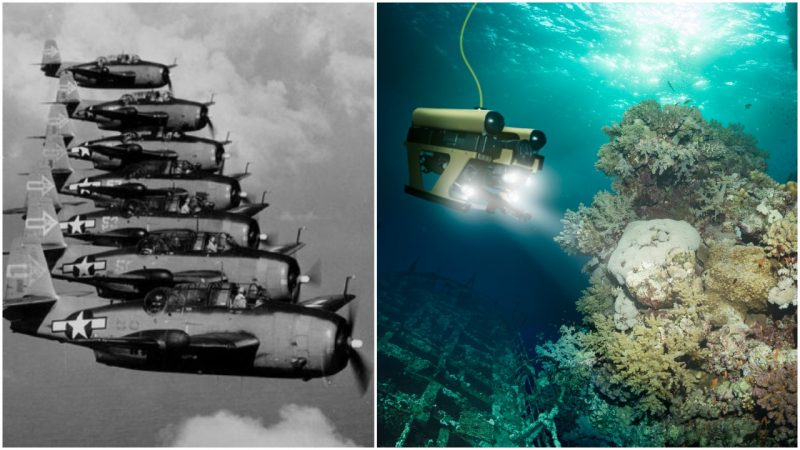On December 5th, 1945, a group of five Grumman TBM Avenger torpedo bombers went on a training mission, never to return again. They took off from Fort Lauderdale, Florida, and allegedly disappeared somewhere above the area that has become known as the Bermuda Triangle.
Designated as Flight 19, this event would become the starting point of numerous conspiracy theories revolving around this infamous region in the western part of the North Atlantic Ocean, most often defined as the area between Miami and the islands of San Juan, Puerto Rico, and Bermuda.
Once the bomber group was declared missing, a search party was sent out, only to face the similar fate. A total of 27 men were lost and declared dead. No official traces of their aircraft were ever recorded, but unofficial investigations captivated the imagination of many, as answers were scarce and the stamp of “top secret” overshadowed the incident.
One such investigation was conducted by Graham Stikelether, a lawyer from Florida, who spent 50 years trying to get answers about Flight 19 but with very little success. The reason why Stikelether became interested in this particular case lies in a coincidence that occurred in 1963.
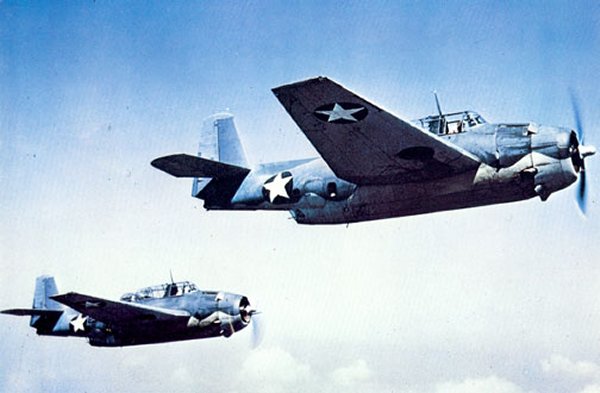
While hunting in the nearby swamps, Stikelether discovered a downed airplane with Navy markings and two bodies inside. It was clear that the wreckage was old, but the question was how old?
Graham immediately informed the authorities, who cleared the wreck and removed the bodies. They didn’t say much, but one slip of the tongue was enough. Someone from the Navy mentioned that the aircraft must be related to the Flight 19 incident.
Mr. Stikelether, who would later become an Indian River County judge, made several official attempts to learn the identity of the men found on that day, 8 miles southwest of Sebastian, but he always encountered a wall of silence.
When he ran out of official channels, he turned to his friend who worked in the Pentagon. After learning of Stikelether’s inquiry, the friend called back and told him to drop the case. This only confirmed that it was something too deep for a regular citizen to be asking questions about.
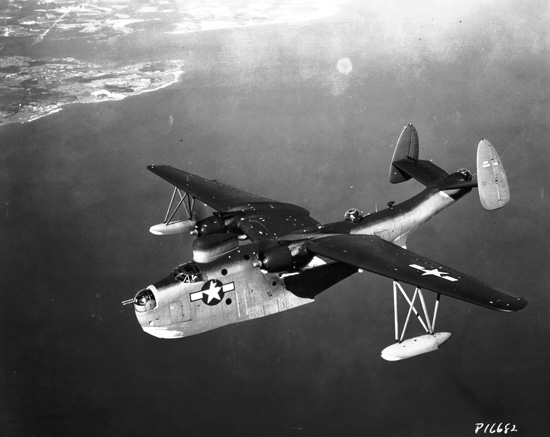
At the same time as Graham Stikelether was conducting his research, another man was also dedicating his time to uncovering the mystery behind the disappearance of the so-called Lost Patrol. Tom Myhre investigated the case in the 1980s.
Unaware of Stikelether’s earlier discovery, he developed a theory which claimed that there could perhaps be several plane wrecks on the mainland in Florida. The Navy denied any such idea, sticking to the official report that the planes had crashed into the ocean and that the wrecks were never found.
In 1989, the science magazine Omni published a story based on Myhre’s research. Stikelether read the article and contacted Tom Myhre in the hope of learning something more about Flight 19. Myhre, on the other hand, found out through the Omni article about the wreckage found in 1963 and the two bodies aboard.
The two joined forces in an attempt to get to the bottom of the mystery. That same year, Myhre tried once more to find out the identities of the bodies found near Sebastian, Florida. Since Stikelether was unable to provide the exact date of the recovery of the wreckage, the Navy refused to give any info.
Nevertheless, Myhre found out that even though the squadron was under the command of the Navy, it included several Marine crewmembers. He continued to build on his theory, concluding that the aircraft found in Florida was the one flown by Marine Capt. Edward Powers. His crew included Sgt. Howell Thompson, the gunner, and Sgt. George Paonessa, the radioman.
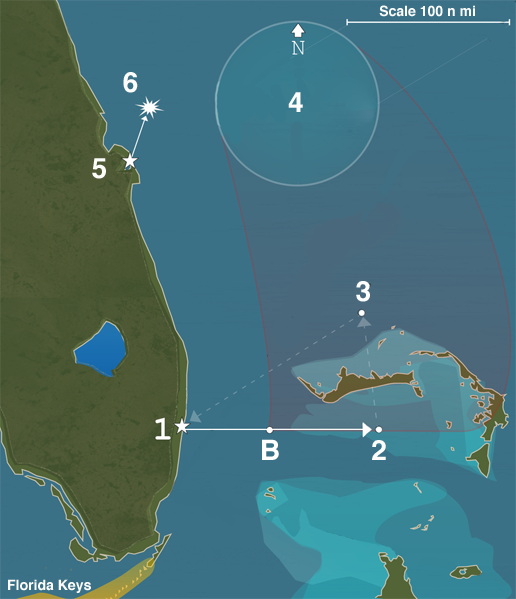
1. Leave NAS Fort Lauderdale 14:10 on heading 091°, drop bombs at Hen and Chickens shoals (B) until about 15:00 then continue on heading 091° for 73 nautical miles (140 km) 2. Turn left to heading 346° and fly 73 nautical miles (140 km). 3. Turn left to heading 241° for 120 nautical miles (220 km) to end exercise north of NAS Fort Lauderdale. 4. 17:50 radio triangulation establishes flight’s position to within 50 nautical miles (93 km) of 29°N 79°W and their last reported course, 270°. 5. PBM Mariner leaves NAS Banana River 19:27. 6. 19:50 Mariner explodes near 28°N 80°W.
Then a report by a commercial airliner dating from the time of the crash was found. The pilot of an Eastern Air Lines DC-3 claimed to have spotted a flair on the coast of Florida. For Myhre, there was no doubt ― the flair belonged to the crewmembers of the Grumman TBM Avenger torpedo bomber.
Graham Stikelether passed away in 2009, but his friend continued the search for evidence to back his theory. In 2013, a Freedom of Information Act request was filed, only to be rejected with an explanation that the names of the airmen found in Sebastian were redacted from the Navy files.
As only two bodies were found that day, Myhre has reason to believe that Sgt. George Paonessa might have survived the crash and went into hiding. Evidence that supports this claim lies in yet another peculiarity.
Minerva Bloom, a docent at the Naval Air Station Fort Lauderdale Museum, provided Myhre with information of a mysterious Western Union telegram, that was sent from the Naval Air Station in Jacksonville, just a few days after the Flight 19 incident.
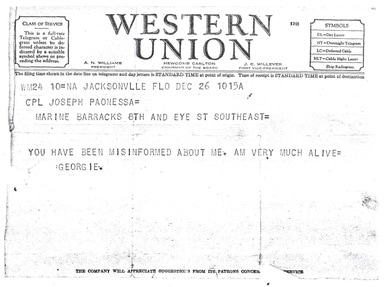
The telegram was addressed to the Paonessa family, who had received it and cherish it still, as proof that George Paonessa survived the crash, but for unexplained reasons had decided to disappear from the face of the Earth.
It read:
I am very much alive.
Signed: Georgie
The Sun-Sentinel ran a story on this strange case in 2015, and Minerva Bloom was interviewed. According to her:
The telegram is believed to be a hoax by many. But I am not 100 percent sure because the family believes it is authentic, as only close family members knew his nickname, Georgie
There are still many unanswered questions concerning the disappearance of Flight 19. There are numerous theories to be found on the internet, at least one of which includes paranormal powers as being part of the equation. As for Tom Myhre, he continues to look for the truth and to keep stirring the pot to get answers, as he himself told the Sun-Sentinel in 2015.
